Live plants are a great way to improve the health of your fish by improving the water quality and lowering their stress levels. An aquarium fish may get poisoned by the waste that isn’t cleaned up quickly enough. When live plants are in the water, they remove ammonia, nitrites, and nitrates from the waste.
Live plants can help keep unwanted algae under control because they can get the most out of algae for space and food in a limited area. You have to change the water less often when adding live plants.
Table of Contents
Are Plants Good for Aquariums?
The live plants in your aquarium help to make it look like a small piece of nature, and they may be one of the best ways to keep your fish healthy. Fish have a safe place to hide in plants, and they can help keep algae from growing by competing for nutrients with algae.
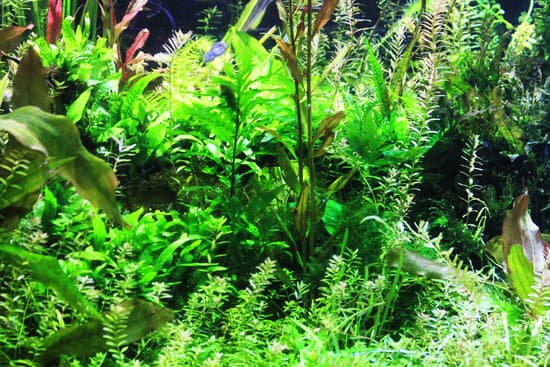
Your fish produces oxygen (O2), and live plants help remove carbon dioxide (CO2) and ammonia (NH3) from the water. This is the most crucial benefit that live plants have for your aquarium. The live plants in your aquarium may be one of the best ways to keep your fish healthy.
In the aquarium, plants that live in water are beneficial. The most important thing is to have an exemplary filtering system. Plants in the water have a unique ability to remove waste from fish, and they also help get rid of food particles that have gone bad. Aquatic plants take up nitrates through their leaves and the soil.
Things To Consider in Growing Aquarium Plants from Seeds
When it comes to aquarium plants, you can either plant them outside or inside the fish tank. It will again depend on what kind of plant and fish you have. It is essential to consider all the aspects of your fish tank before placing any live plants in there.
Make sure you have everything you need to grow the seeds. It would help if you had water, fertilizer, and substrate, the soil or gravel you will use to increase the sources. It would help if you also had enough light or even direct sunlight. You need to make sure you have enough of them and use them correctly to make sure your seeds grow quickly and satisfactorily.
In the first place, decide what plants you want to grow and how big you want them to be. You can grow grass and other plants.
What kind of fish do you have in your fish tank? That’s a separate thing to think about. Depending on the species, a particular plant may or may not be suitable for a specific fish.
Following the choice of the plant to grow, the next step is to choose the method. People can grow different plants in different ways.
Aquatic plants are essential to have a happy and healthy aquarium. Be careful to choose live plants that are genuinely aquatic and right for the water type in your aquarium. It would help if you also chose plants compatible with the fish in your aquarium.
In some cases, you might find snail eggs or other dangerous creatures on plants in your aquarium, which could change the balance of the ecosystem in the tank.
You don’t want to buy plants that have already been grown; you might want to buy some seeds and grow plants in your fish tank instead.
Types Of Plant You Can Grow in Your Aquarium
Java Moss
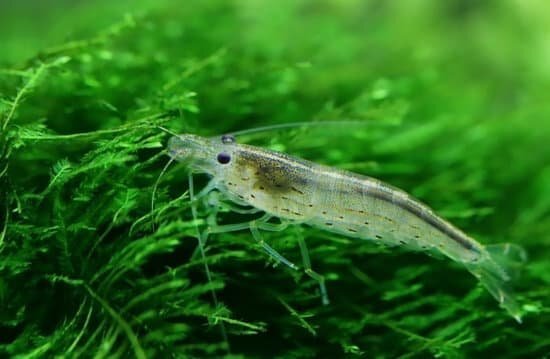
Java moss is a common aquarium plant that is easy to care for and difficult to damage, making it an excellent choice for beginners. It is resistant to temperatures ranging from 22 to 32 degrees Celsius.
The pace of growth rises when the illumination is adjusted to a medium-high level. It is recommended that you tether your Java Moss to something to prevent it from drifting away.
Money Plant
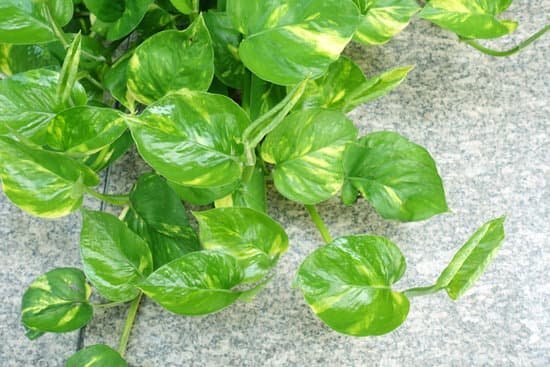
Money plants may be grown in aquariums by hanging them from the ceiling and developing roots in the water. It absorbs nitrates and utilizes them for growth, which is beneficial to the fish.
If you provide adequate light for the money plant, it will flourish. It’s thought to bring good fortune to a home while also making it seem attractive to aquarium owners.
Water Wisteria
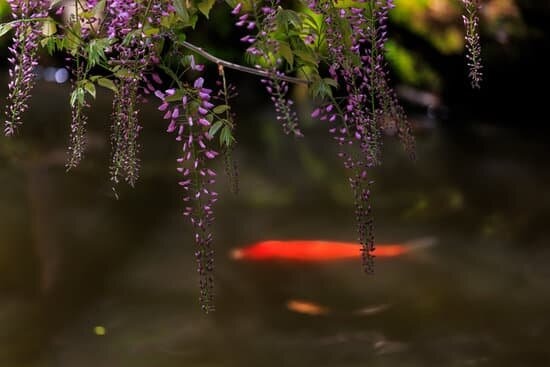
Water wisteria is a popular aquarium plant for everyone because it is straightforward to maintain. It may be found either rooted in the ground or floating on the water’s surface.
This plant enjoys direct sunshine and thrives at temperatures ranging from 23 to 26 degrees Celsius, depending on the variety. It has a green aquarium cover with a carpet-like appearance with lace-like green leaves.
Anacharis
Anacharis is a low-maintenance aquarium plant that is easy to keep alive and growing. It has dark green foliage that gives aquariums a more vibrant appearance. Anacharis grows in a wide range of water temperatures, and it favors water temperatures between 22 and 25 degrees Celsius.
The excessive lighting increases the formation of green algae hair on Anacharis, which makes it challenging to grow in bright sunlight. It may either be planted directly on the ground or float freely in the water.
Amazon Sword
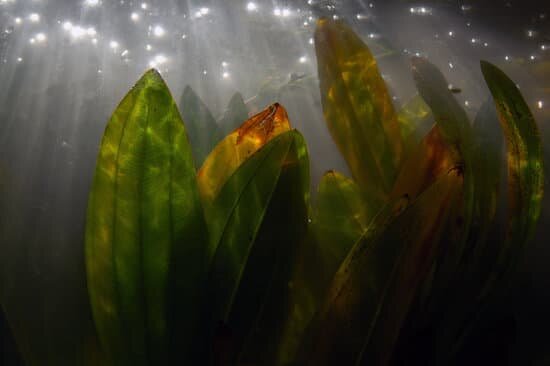
It is a gorgeous aquarium plant known as the Amazon sword. It can grow with just a tiny amount of fertilizer and lighting and still flourish. It is elementary to maintain, even for beginners.
It grows best in bright sunlight and at temperatures ranging from 22 to 27 degrees Celsius, and it may grow to be as tall as 20 inches.
Java Fern
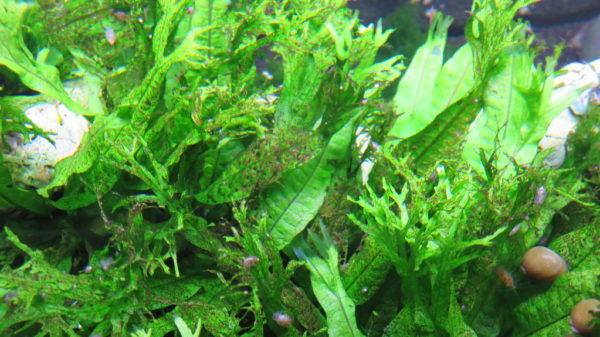
It is ubiquitous to see the Java Fern in aquariums, an excellent plant for beginners. Lights of a low to medium intensity are suitable for growth, and they may be put anywhere in the aquarium without detracting from its aesthetics or functionality. The Java fern involves water between 22 and 25 degrees Celsius in temperature.
Hornwort
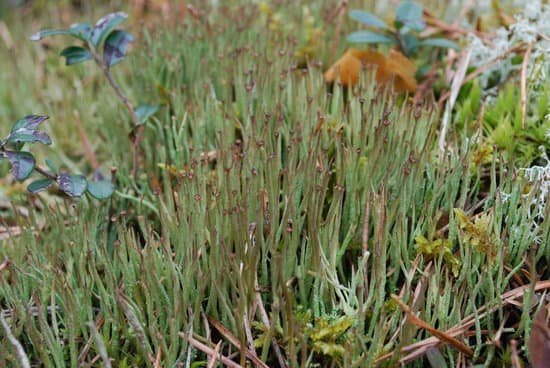
Hornwort is a low-maintenance aquarium plant that floats freely on the water’s surface. Hornwort may grow to a height of 24 inches and is readily propagated by cutting the stems of the plants in half. It is recommended that hornwort be planted in the substrate. This plant requires little care and is well-liked by people because of its distinctive shape.
Growing Aquarium Plants from Seeds: 7 Quick Steps
Step 1: Gather Your Seeds
You should purchase aquarium plant seeds from your local fish store rather than elsewhere.
Instead of asking for recommendations if a store doesn’t have the seeds you’re looking for, seek advice from other fish keepers, breeders, and shop owners who may be able to help you find what you’re looking for. As soon as you get the seeds, make ready to plant them.
It’s best to keep them in a container filled with clean water until you’re ready to plant them or keep them in the packaging they arrived in.
Step 2: Prepare A Planting Soil
Fill a tray or a conventional garden pot with potting media; if you don’t have access to any other materials, you may use garden soil or peat moss. Use any suitable container with holes drilled in the bottom that meets your requirements.
A plate or saucer full of water placed underneath the tray can help keep the soil wet at all times. You’ll also want to make sure that the potting media is well dispersed throughout the seedbed so that there are no dry spots.
To finish preparing the bed, water the peat well, making sure to get it all over the place.
Step 3: Sow the Seeds on A Soil Bed.
Remove the seeds from their packages or the holding water once the bed has been prepared and place them in it.
It would be best to sow the seeds slightly above the potting media in the ideal situation. Allow the roots to breathe if they are too little; if they are too large, cover them with a small quantity of linen.
Following that, the seed will germinate and grow into seedlings in seven to fifteen days.
Step 4: Transferring Your Seedling
It’s time to transfer the seedling into your aquarium when it reaches a height of two to three inches.
When transplanting a seedling, be careful since young plants are often sensitive, and even a tiny amount of damage will prevent them from developing.
Make sure their root systems are fully established. Additionally, make sure your fish are well-fed before transplanting the seedling, mainly if you’re dealing with species that like plant matter in their diet.
Step 5: Take It to The Tank
It is appropriate to transfer them into your tank when they are around 2-3 inches tall and have a well-developed root system. When it comes to nutrition, fish that prefer plants as a food source should be fed before being transferred.
Step 6: Keep Your Aquarium Plants Healthy
In the last step, you’ll have to look after the aquarium’s plants. To keep your plants healthy, give them adequate light and CO2, as well as fertilizer and other nutrients.
However, too much fertilizer may make small, fragile plants mushy, so exercise care while fertilizing your fish tank.
Step 7: Leave Them Alone
Remember not to overcrowd your fish tank with fish or plants, and make sure that any other aquatic plants in the tank don’t block the seedling’s access to light.
It is advised that you maintain and clean your aquarium correctly, including cleaning your gravel; however, you must be careful not to uproot your seedlings during this procedure.
How Long Do Aquarium Seeds Take to Grow?
When aquarium plant seeds start to grow, it takes between seven and fifteen days for them to sprout, and the average length of time is ten days. Even so, some plants may take a long time for their seeds to sprout and grow into full-sized plants. Also, how your aquarium is set up will affect how quickly your plants grow.
Information On Growing and Taking Care for The Aquarium Seeds
Growing aquarium plants from seeds may take more time and work than buying plants, but the results are worth it. It is possible to check the plants as they grow to ensure they don’t have any creatures that could hurt or disturb your fish.
You may also be able to see the benefits of your work, which is already a good thing.
Fertilizers
The most important thing to remember about fertilizers is using the right amount. Using too little, too much, or the wrong fertilizers can all have harmful effects on your plants, seeds, and aquarium as a whole if you do it wrong.
Co2
This is how plants use carbon dioxide and light to make oxygen. Consequently, CO2 is needed for seed growth. If there isn’t enough CO2 in your tank, the seeds will draw CO2 from the CO2 that fish and bacteria naturally emit in the tank.
Trimming
It’s essential to keep your plants appropriately trimmed so that they don’t take up all of the space in your aquarium, which is especially important for plants that proliferate.
Cleaning
Ten percent bleach mixed with one gallon of water is the best way to clean your windows, so do it now. The plants should be taken out of the aquarium and soaked in the solution for five minutes before being put back in the tank with water.
Substrate
The substrate is the material that makes up the bottom of aquariums. It has a significant impact on how well the fish and plants filter the water, how it looks, and how long they live.
Lighting
You can use fluorescent, LED, and metal halide lighting to make these two colors look the same. People usually say that two watts of light for every gallon of water are good to use.
Gravel
This is a good choice for aquariums that only have fish because it doesn’t need a lot of work. In an aquarium with plants, this substrate should only be used on top of the water if you want them to grow.
Get Rid Of Algae
This is the same process that is used to clean the plants. Instead of just putting it in the bleach solution, gently touch it to eliminate any algae built up.
Planting Seeds in Established Aquarium
If you want to build an aquarium, start by growing your seed carpet inside of it. Even though ready-made aquariums are available, self-made seed carpets inside the water tank are better.
Planting carpet seeds in an already established aquarium is a simple process. You choose the type of seed, but the seed in the soil, add sand and gravel, and fertilize the soil and roots. Add a good light source to the aquarium to keep the temperature and carbon dioxide levels stable.
Take these steps:
- To make seed grass, you’ll need moss seeds. Choose the sources that best fit your needs. They’re great because they’re very sticky and proliferate. You can buy them online or at a lot of seafood stores.
- It would help if you used dirt to make the surface smooth and even in this phase. If you want to make the soil a different color, you can. Sand should be a different color than the seeds so that it’s easier to find and spread them.
- It’s a complicated process that needs help from professionals. Make sure you have a container with nozzles or a bottle of water that you can use to spray things. Sprinkle the soil with water before adding any more.
- Then spread a small number of seeds on the ground. Begin at one of the sand’s corners or the water tank and work your way around it. Spritz some water on the base. Keep going so that no single spot of sand is left.
- Keep the temperature of your aquarium at a reasonable level. It must be the same temperature as the rest of your living room if you have a fish tank in there.
- Sprinkle water on the seeds with a spray canister or bottle. Keep doing it every day for at least three days.
- Leave them there for 5 to 10 days after finishing the whole thing. This time is needed for the seed to germinate and grow. Continue to look at them from time to time, but don’t move them from where they are now.
- After you’ve filled the fish tank with water, make sure it isn’t too hot for the fish. The maximum temperature should not be more than 28 degrees Fahrenheit. Keep the carbon dioxide level low, or the seeds will start to break down before they can grow.
Maintaining The Aquarium Plants
Use these tips for the healthy maintenance of aquarium plants.
- Aquarium plants need 8 to 12 hours of “sunshine” to grow well each day. Make sure the aquarium is close to a power source. Finally, to give the rays, but the light on top of the tank. How much light you need for your aquarium will depend on the size of the tank itself.
- Changing 10% of the water every week or 25% of the water every month will make the water the best.
- You don’t want to pick too many plants for your tank, so there isn’t enough room for the fish to swim around.
- Middle-ground plants, which are about 4 to 10 inches tall, can decorate the edges of the aquarium. Fish should be able to swim freely in the middle of the tank.
- Plants should be in there up to the base of their stems. Put them in a pit, then cover them with gravel. Cover the plant’s bulb with gravel up to the point where it starts to grow.
- It is essential to change the water often because it stops solid waste buildup and removes nitrates and other waste products from fish and plants.
- Read the directions on the fertilizer package when you add it to your fish tank plants.
- Aquarium gravel, or a substrate that is good for plants, should be laid down on the bottom of the aquarium to a depth of 2 to 3 inches. This will help the plants grow properly.
- Clean your filter media very well. When you clean your filter, you can get rid of organic debris built up over time.
- Do not forget to check that all the things in your aquarium work properly, such as the heater, filter, light timer, CO2 equipment, etc.
How Do Aquarium Plants Affect PH?
Most plants in a fish tank like a pH between 6.5 and 7.8. When plants get enough light and carbon dioxide, they take in carbon dioxide and make oxygen, and oxygen does not affect the pH of aquarium water.
Carbon dioxide lowers the pH of aquarium water, which makes it more acidic, but oxygen has no effect. In this way, when plants take carbon dioxide from the air, they make the pH level of the water go up.
While aquarium plants affect the pH, the pH also affects the aquarium plants, impacting each other. Plants and fish can often adapt to the chemistry of the waterways where they live.
Dead plants could have a significant effect on the pH of the soil. In a fish tank, dead plants break down, releasing ammonia and other nitrogen compounds into the water, lowering the ph.
If you have dead plants and fish in an aquarium, this is not the best place to live for other fishes. You should remove the dead plants and fish and change the water as soon as possible.
How Do I Keep Aquarium Plants Healthy?
Choose the right plants for your aquarium, just like you need to choose the right fish. To grow different types of fish, each plant has different needs.
A suitable pH range for most aquarium plants is between 6.5 and 7.8, with general hardness of 50 to 100 parts per million.
There should be less than 10ppm of nitrates on leaves, while there should be less than 0.01 ppm. The temperature should be between 74- and 80-degrees Fahrenheit for a healthy environment.
What Fish Species May Damage Aquarium Plants?
- Goldfish
- Mbuna
- Oscars
- Uaru spp
- Leporinus spp
- The Common Pleco
- Silver Dollars
- Buenos Aires Tetras
FAQs
Most pond plants don’t need soil to grow. Fish waste and fish food that has gone bad may be enough to feed the plants in the pond. In fact, in some cases, bacteria may grow around plant roots because of the soil.
Plants are very effective at eliminating carbon dioxide from crowded tanks. Having plants around reduces the amount of ammonia, nitrites, and nitrates in waste, which may be harmful to fish if left to build up for too long.
Water that is clean and relatively soft, Light with a wide variety of colors, Nutrients, and Suitable substrate should be used.
Conclusion
In addition to being beautiful and natural, aquatic plants provide several chemical and physical advantages. Aquatic plants are suggested for aquarium enthusiasts of all levels, from beginners to experts.
No related posts.
